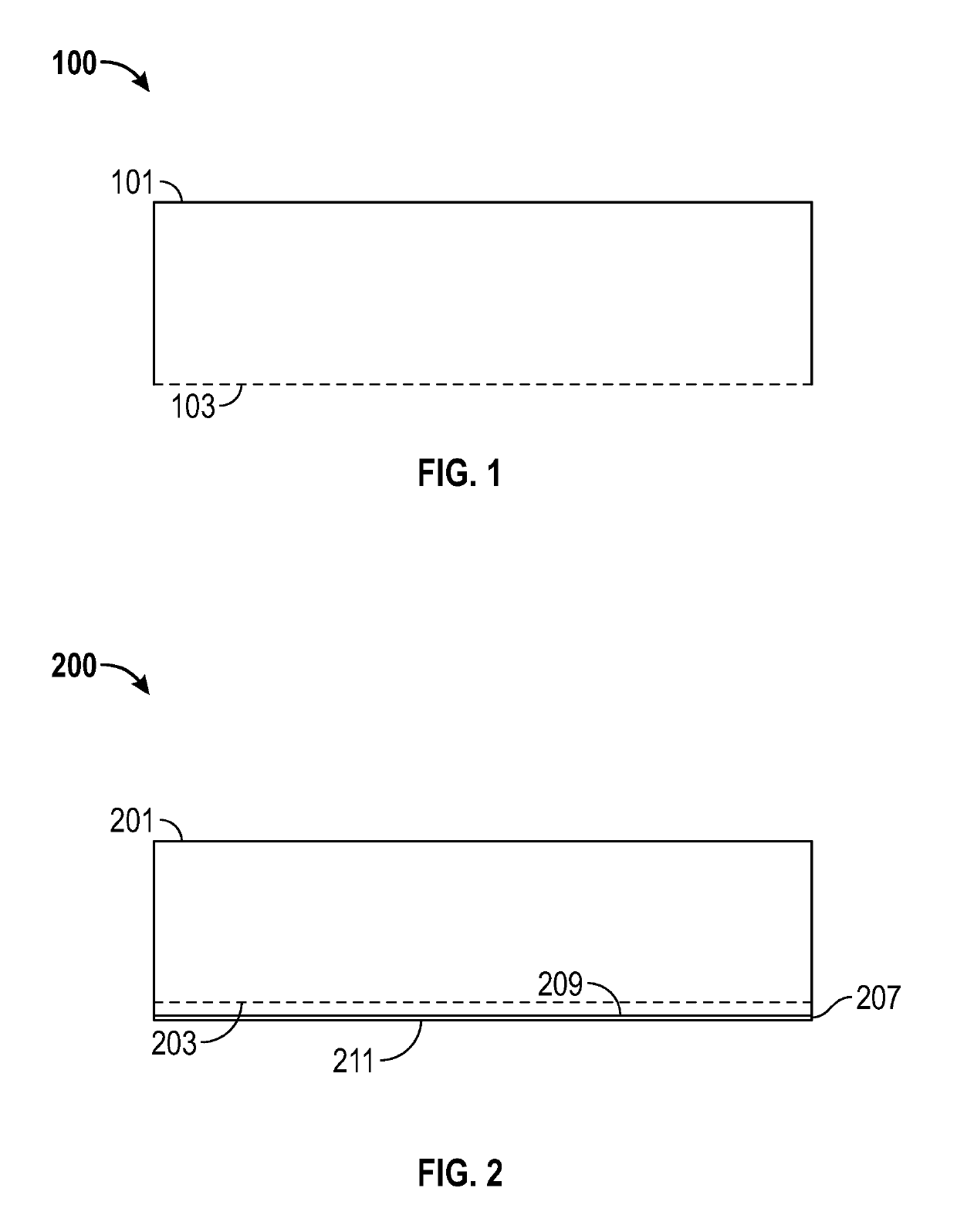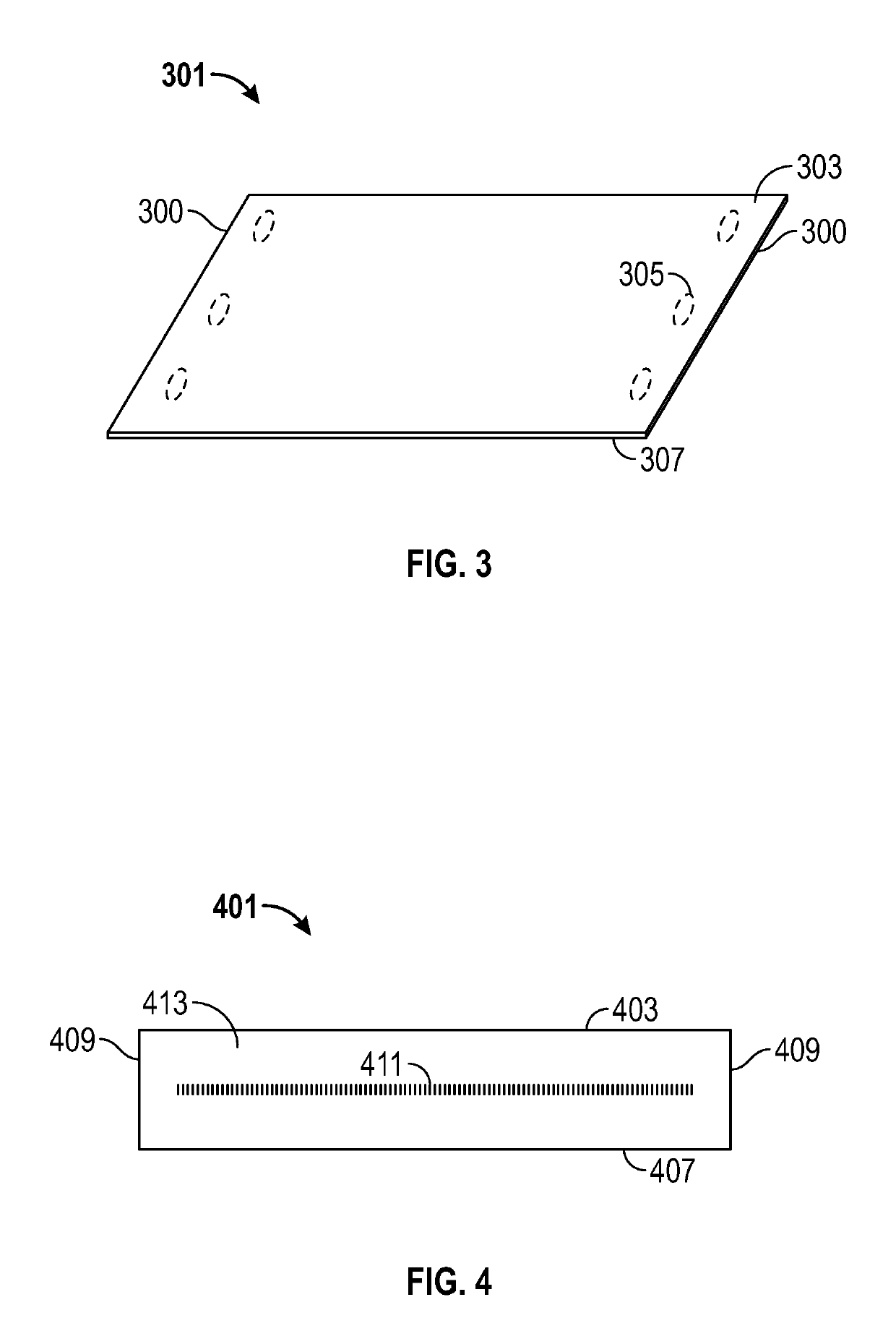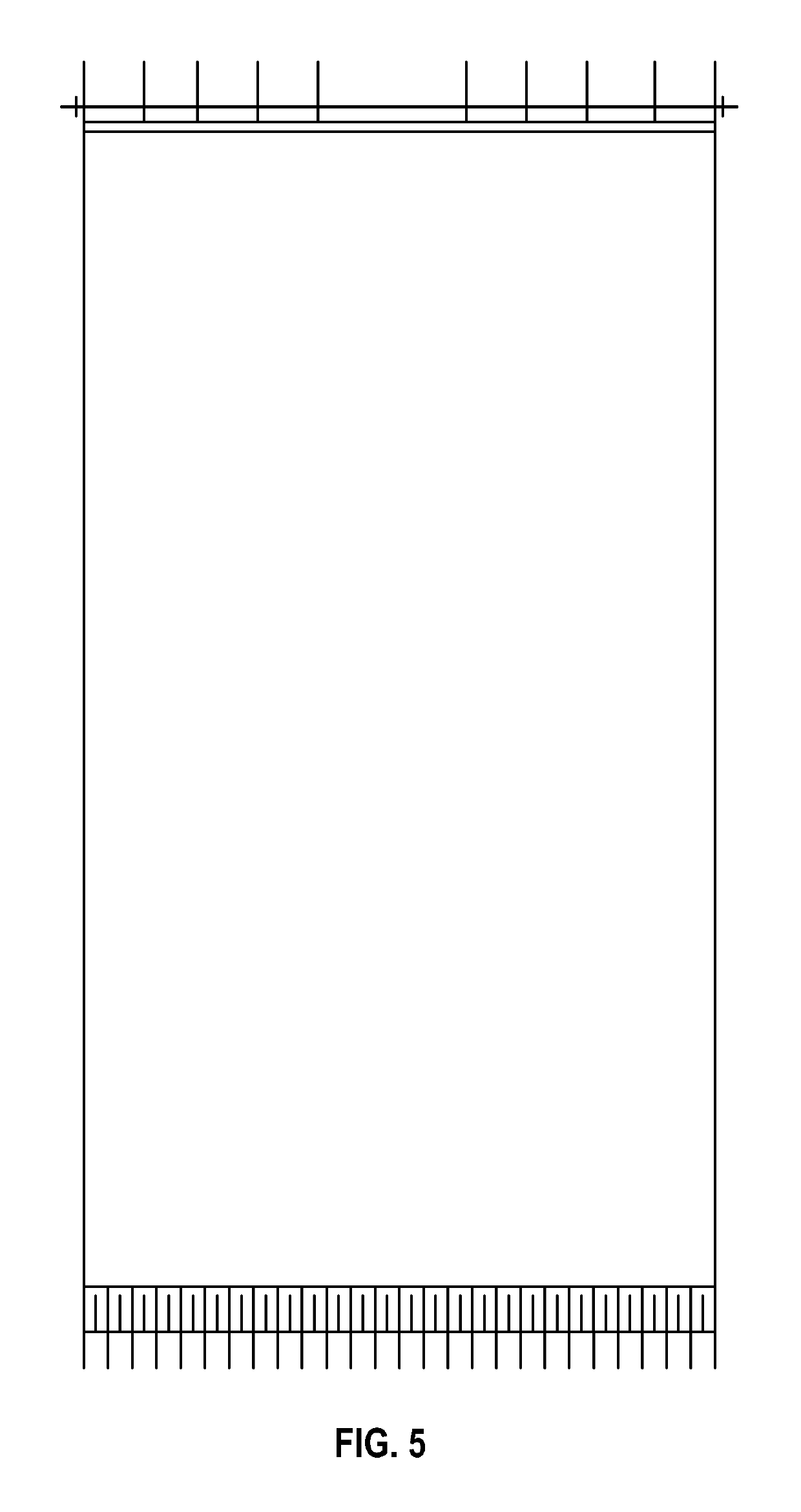Use of PTFE sheet in manufacturing wood-based products
a technology of ptfe and wood, which is applied in the field of use of ptfe sheet in the manufacture of wood-based products, can solve the problems of inability to meet the requirements of the application, and inability to adhere to the press, so as to eliminate or reduce the use of release agents, and achieve the effect of cost saving
- Summary
- Abstract
- Description
- Claims
- Application Information
AI Technical Summary
Benefits of technology
Problems solved by technology
Method used
Image
Examples
Embodiment Construction
[0028]The present invention provides for wood-based products (e.g., OSB, PB, MDF and / or HDF), methods of manufacturing wood-based products, articles of manufacture employed in the manufacturing of wood-based products (e.g., PTFE sheet configured to be attached to a platen and / or platen configured to attach a PTFE sheet), systems used in the manufacturing of wood-based products (e.g., platens having PTFE sheet attached thereto), methods of using such articles of manufacture, and methods of using such systems.
[0029]References in the specification to “one embodiment”, “an embodiment”, “an example embodiment”, etc., indicate that the embodiment described may include a particular feature, structure, or characteristic, but every embodiment may not necessarily include the particular feature, structure, or characteristic. Moreover, such phrases are not necessarily referring to the same embodiment. Further, when a particular feature, structure, or characteristic is described in connection wi...
PUM
 Login to View More
Login to View More Abstract
Description
Claims
Application Information
 Login to View More
Login to View More - R&D
- Intellectual Property
- Life Sciences
- Materials
- Tech Scout
- Unparalleled Data Quality
- Higher Quality Content
- 60% Fewer Hallucinations
Browse by: Latest US Patents, China's latest patents, Technical Efficacy Thesaurus, Application Domain, Technology Topic, Popular Technical Reports.
© 2025 PatSnap. All rights reserved.Legal|Privacy policy|Modern Slavery Act Transparency Statement|Sitemap|About US| Contact US: help@patsnap.com



